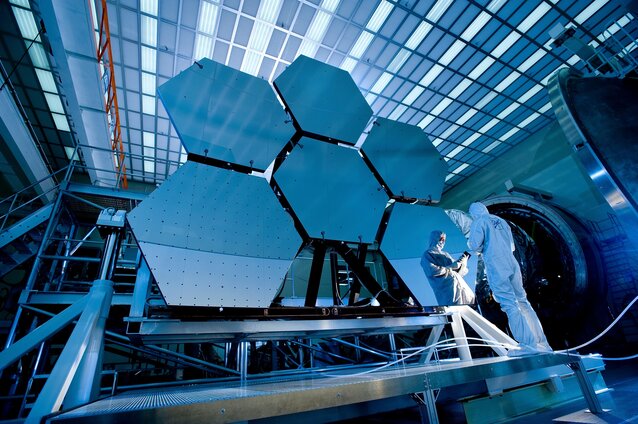Dutch Central Government (employer) and Trade Unions reserved €6 million to experiment with and include a wide range of (new) Green Benefits in the Collective Labour Agreement (CLA) to fight climate change. Through a unique, multi-party innovation process, over 75 civil servants and multilevel teams were trained in innovation and experimentation and jointly came together to develop green benefits pilots to be included in the CLA. The ultimate goal is to develop methods to involve all levels of an organisation in the inclusion of sustainability goals and methods, and thereby design the most sustainable CLA in the Netherlands.
Innovation Summary
Innovation Overview
Unique and multi-party innovation process
An innovation process facilitating over 75 civil servants to collaborate in an interdisciplinary setting (ranging from IT professionals to Prosecution Officers) and multilevel teams (ranging from operations to policymakers) to come up with green benefits pilots to be included in the CLA. An integral approach enabling the translation of ideas into concrete tangible experiments bottom-up through a user-centered process of cocreating, prototyping and testing to validate desirability, feasibility and viability.
The redesign of the CLA is being developed in cocreation with parties that decided to act together to fight climate change (Trade Unions and Employers). A step-by-step codevelopment approach, shifting multilevel between governance, operations and employees to agree on direction, budget and ways to adopt such innovations. Essentially, the deliverables steering towards implementation were as followed:
1. Agreement and budget by governance
2. Bottom-up generated ideas by employees selected by guiding principles
3. Translation into small experiments by employees to assess desirability
4. Selected by jury of experts and scaled to bigger pilots by operations to assess impact and feasibility
5. Include in negotiations between employer and employee (CLA)
6. To be included as green benefits in CLA
The ultimate goal is to develop methods to involve all levels of an organisation in the inclusion of sustainability goals and methods, and thereby design the most sustainable CLA of the Netherlands. In this way set the standard for others and evoke a chain reaction.
Product Innovation
A multi-green benefit package was developed to build a more sustainable organisation. The 14 innovative Green benefits were selected based on six guiding principles (Desirability, Operational Readiness, Impact, Inclusivity, Scalability & Innovativeness). These can be categorised in 5 domains:
1. Mobility
· Employees can select different kinds of mobility solutions during one trip (e.g. bicycle, shared vehicles, train etc.)
· Shared mobility options
· Allowance for maintenance of your bicycle
2. IT
· Use of less devices per employee by using private laptops for work
· Data management by storing data in cloud and sharing links instead of attachments
3. Building Facility
· Spreading use of office presence equally over the week (not only Tuesday and Thursday) by stimulating benefits (to save m2)
· Including biodiversity solutions in and on worksites
4. Behaviour
· Facilitating conversations about climate shame by offering trainings between employees
· Sustainable work outings
5. Individual Choice Sustainability Budget (ICSB); tax-friendly employee-budget to spend on sustainable products, such as:
· Sustainable housing: solar panels, heat pump, batteries
· Vegetarian food boxes
· Repair budget for e.g. IT, clothes
· Green Charity
· More sustainable appliances (e.g. washing machine)
· Private train travel
· Car sharing
Innovation Description
What Makes Your Project Innovative?
Innovative and powerful, since this project demonstrates that an instrument that at first glance wouldn’t be seen as a tool to improve sustainability (CLA), can make a difference for both employees as organisation, and thereby set an example for others. The project is seen as an innovative qualitative bottom-up approach of exploring a fit between employees' needs (tacit and latent) and possibilities within the CLA in comparison to industry standard.
This is all done in cocreation with employees and explored through experimentation to ensure value for employees. Unique in its kind, since it is an end-to-end (multiparty: employees, governance and operations) process from idea to implementation to demonstrate and institutionalise the integration of green objectives and benefits in the CLA.
It is not offering one solution to encourage change, but a multi-solution strategy (14 green benefits) steering towards a sustainable organisation
What is the current status of your innovation?
Framing Opportunities: Opportunities for green benefits were discovered and identified bottom-up by employees (>300). These opportunities have been further developed into 14 concepts in interdisciplinary teams by six guiding principles (Desirability, Operational Readiness, Impact, Inclusivity, Scalability & Innovativeness).
Doing Experiments: These concepts have been tested qualitatively with small tangible experiments (>30 experiments, e.g. landing pages, vouchers for repairing products, vegetarian boxes) with real users to validate desirability. Impact has been assessed by a certified partner.
Scalability & Implementation: Based on these learnings in codevelopment with operations, business cases are developed and feasibility is assessed in a scaled pilot (>1500 employees) and preference assessment (>10000 employees). In 2024, these pilots will be running and several green benefits will be included in the negotiations of the CLA of 2025.
Innovation Development
Collaborations & Partnerships
Initiator (Governance)
CAORijk (CLA Negotiators Employer, Dutch Government)
FNV, CNV, CMHF & AC Vakbonden (CLA Negotiators Employees, Trade Unions)
Project lead & Network (Organization)
DenkDoeDuurzaam (Ministry wide Sustainability Program)
Innovation process design
Transformers Design (Approach & collateral)
Operations
Tax Authorities
DUO (Education Dutch Ministry)
Impact Assessment
Impact Institute: CO2 Assessment
Cocreation, experiments & supporting base
75 civil servants
2500 testers
Users, Stakeholders & Beneficiaries
140.000 Government Officials (ranging from policymakers, operations and inspectors) affected by value created through green benefits in a CLA.
75 Civil servants trained in innovation and experimentation.
Operational partners Government, insight and learnings from concrete experiments in different domains affecting facility management, hardware and offerings.
CLA Partners: best practice in terms of benefits as inspiration and bottom-up process to collect employee needs.
Innovation Reflections
Results, Outcomes & Impacts
A unique developed ‘designerly' approach in a governmental context to shape policies through experimentation in co-creation with employees, governance and operations to generate and implement solutions.
▪ >300 submissions (green benefits): 14 experiments (multiple green benefits) developed by mixed teams of civil servants; 2500 employees making use of the green benefits in the experiments
▪ Quickscan of green benefits on impact (Theory of Change & quantified C02 reductions)
▪ Scaled in 5 domains, assessed on feasibility (by operations) and translated in concrete pilots
▪ 140.000 civil servants who can profit from these green benefits in 2025
▪ Example can lead to adoption by other organisations, starting with civil organisation
Challenges and Failures
Firstly, the existing organisational infrastructure is not build for quick experimentation with real users. Due to the lack of flexibility, a lot of (administrative) setbacks can be faced. To overcome this, the objective of experimentation was included in the policy agreement for the CLA and budget was allocated for this purpose. Secondly, after experimentation, ‘Fixit’ sessions were organised with the ‘whole system’ in the room to facilitate implementation. Thirdly, prototyping is not part of the core DNA of a policymaker. The uncertainty and imperfection along the making process can be uncomfortable. Therefore, they were educated by experts in the field of ‘designing’ and co-created together to ensure concrete results.
Conditions for Success
A clear assignment, resources and support from the top (governance) to run experiments. A structured process moving from idea to pilot to implementation, facilitating progress and to fall back on in case of uncertainty. Room to experiment on the borders of the system. A learning-by-doing attitude and making ideas tangible and doable for experimentation. Intrinsically motivated people with shared values, the right energy and perseverance to run this project. Interdisciplinary teams, with the right knowledge and perspective of sustainability, operations and other related domains.
Replication
Two elements of the project can be replicated: the process and the green benefits. The followed process of gaining insights from employees (bottom-up) and in cocreation, while prototyping, designing your own CLA can be replicated and pursuit on different topics. Interest has been shown to follow a similar approach on other topics.
With regards to the green benefits (outcome of project), besides similar organisations, such as municipalities and other governmental initiatives, also companies and organisations part of AWVN (employer union organisation) (>750 companies) can include the green benefits in their CLA.
Lessons Learned
Although you have a written assignment and a reserved budget, the system might not be ready to deliver due to politics and agility of the organisation. Allow some time for acceptance, errors and administrative workload.
Manage timeline and expectations of the teams that are experimenting. They need to break through the barriers and need to be prepared.
Find the people in the organisation that enjoy making it happen and spots the opportunities, despite the impossibilities.
Ensure enough capacity to facilitate the end-to-end process (from insight to experiment and implementation).
Anything Else?
We have written several articles about the ideas and experiments of the participants of the program (in Dutch, we advise to use translator):
- https://www.denkdoeduurzaam.nl/actueel/nieuws/2024/01/25/routines-doorbreken-dat-doe-je-met-koffie
- https://www.denkdoeduurzaam.nl/actueel/nieuws/2024/01/18/een-apparaat-voor-zakelijk-en-prive-hoeveel-verduurzaam-je-daarmee
- https://www.denkdoeduurzaam.nl/actueel/nieuws/2023/12/7/bespreek-het-betere-gesprekken-over-duurzaamheid-mogelijk-maken-in-de-cao
- https://www.denkdoeduurzaam.nl/actueel/nieuws/2023/11/30/dataschaamte-data-als-onbekende-vervuiler
- https://www.denkdoeduurzaam.nl/actueel/nieuws/2023/12/21/tweewielers-in-de-cao-duurzaam-goedkoop-en-gezond
Supporting Videos
Status:
- Developing Proposals - turning ideas into business cases that can be assessed and acted on
Date Published:
24 June 2024


